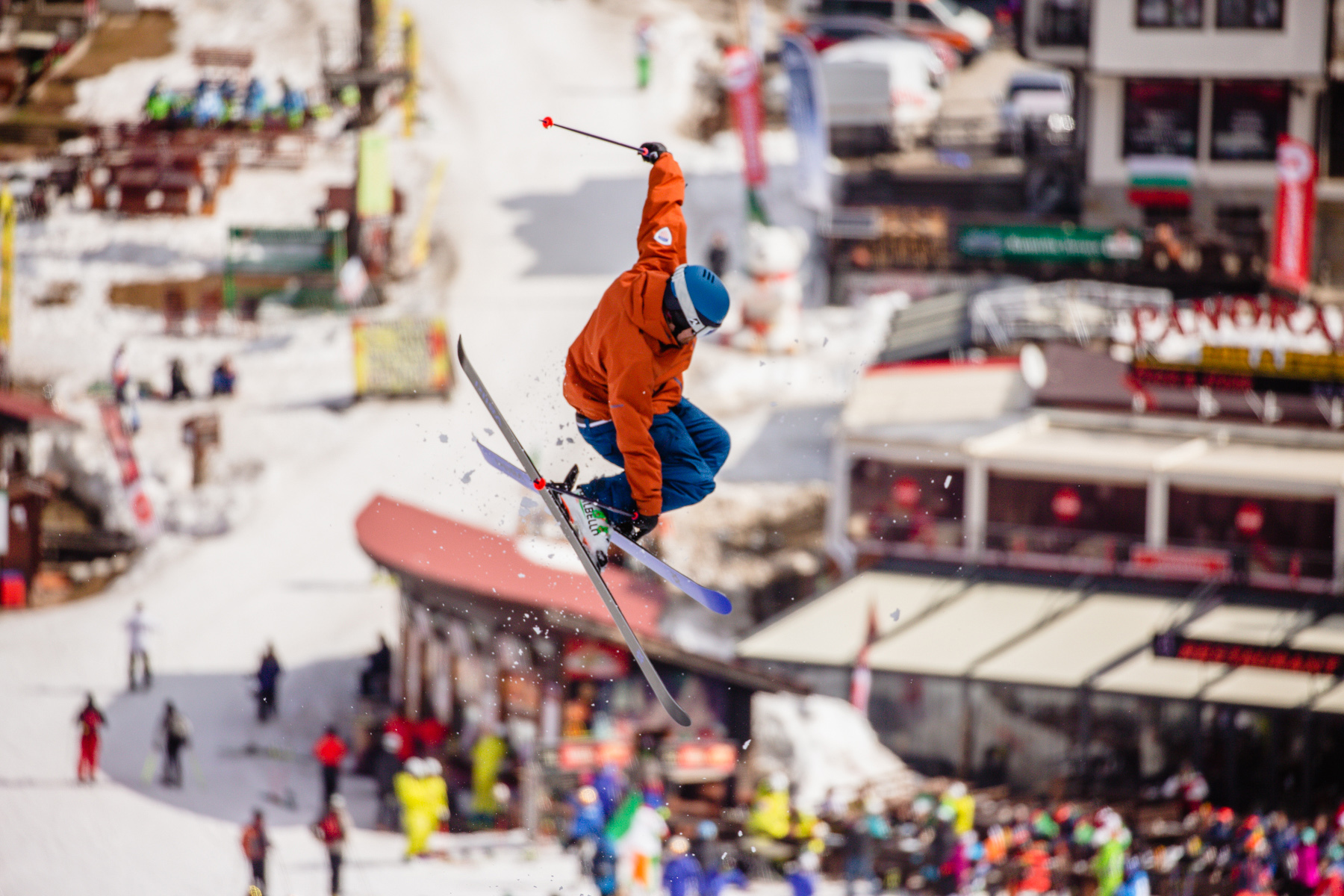Improve Your Skiing Using Three Takeaways from the 2018 Winter Olympics Slopestyle Competitions
Watching Olympic athletes’ stance, execution, and orientation, during the alpine slopestyle competition can help you improve your own skiing this winter, according to the Winter edition of 32 Degrees, The Journal of Professional Snowsports Instruction for the Professional Ski Instructors of America and American Association of Snowboard Instructors (PSIA-AASI).
Alpine slopestyle is a competition that takes place on a course with terrain park features, such as rails and jumps, and athlete’s run is scored on originality, amplitude (the height and speed of tricks), and the quality of their tricks. Slopestyle falls into the freesking discipline, where individuality in style and performance is encouraged.
Ryan Christofferson, a top instructor and PSIA Freeski team member, explains what to look for during the competition, and how to use these takeaways to improve your own skiing when you hit the slopes this season.
“Slopestyle is one of the most watched events in freeskiing. The course is filled with big jumps, transitional air features, and boxes and rails,” says Christofferson. “The variety of features and the athlete’s creativity, athleticism, and precision, make it really fun to watch.” When watching, Christofferson recommends looking for and analyzing the athlete’s stance, execution, and orientation.
1. Stance: Slopestyle athletes will demonstrate a strong stance before take-off, while performing the trick, and during their landing. A skier’s stance should be balanced over the whole foot—they do this by flexing at the ankles, knees, and hips. Athletes might also use their arms to engage their core when setting up a maneuver. Use this same balanced and flexed stance in your own skiing. You can also use your arms to engage your core giving you more strength and stability.
2. Execution: In recreational skiing, we often talk about turn initiation, which is how we start a turn. The same holds true in slopestyle. The skier sets-up the trick before their skis leave the ground, then manages the trick throughout their time in the air or on the box/rail. In recreational skiing, how you set up your turn at the beginning, or initiation, phase determines the strength and effectiveness of the turn. Remember to set yourself up for success.
3. Orientation: When skiing, you look ahead to prepare for what is coming, help with alignment, and orient your body. The same holds true for slopestyle, but in these competitions, the athletes are taking off and landing both forward and switch (backwards). When watching the games, pay attention to where the athlete’s head is facing at the end of a trick. If they are coming out from being inverted or rotating, you will see the first thing they reorient is their eyes and head, and the rest of the body lines up with the direction the head is facing. Remember to look where you want to go when skiing, your body will follow your eyes.
Christofferson notes that every athlete has his or her own individual look, vibe, and style that make freeskiing fun to watch. While there is individuality, each athlete exhibits a strong set of fundamentals: stance, execution, and orientation. Use these three fundamentals to improve your own skiing this season.
If you want to take your skiing to the next level, Christofferson recommends visiting the PSIA-AASI’s Take a Lesson page to learn more about the benefits of taking a lesson from a certified instructor.
Christofferson explains the best way to improve your skills, at any level, is to take a professional lesson. He says, “Instructors are here to get people stoked on the sports we love, and help make winter more fun!”







